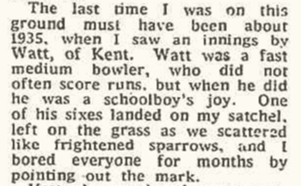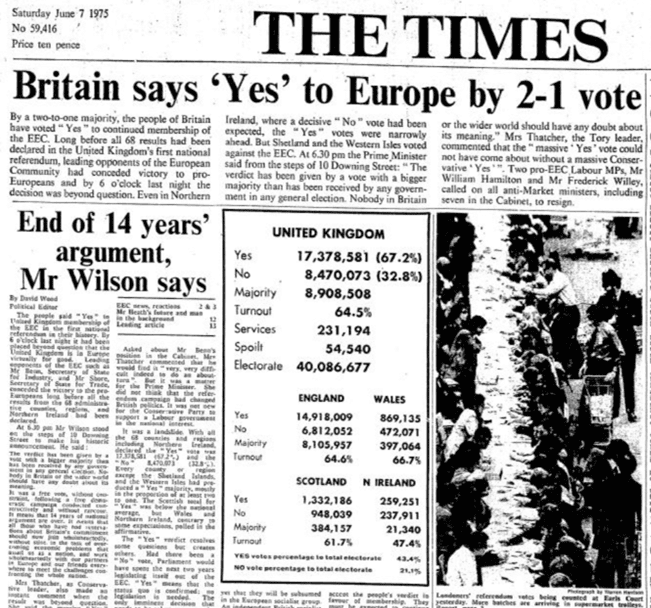In the present there is a world cricket final taking place at
Lord’s. There was another one, in Dubai (!) a couple of months ago, and another
last year, when part of the tournament was played partly in the USA (!!). And
so on. It all began fifty years ago this week, when the first Cricket World Cup
began. Not that is was called anything so vulgar. Officially, it was the International
Championship Cricket Event of 1975, or, in acknowledgement of the sponsors, the
Prudential Cup. The word “World” did not appear on anything official.
There were eight competing teams: the six active test-playing
sides plus Sri Lanka (Ceylon, recently renamed) and the composite East
Africa. England, India, New Zealand and East Africa constituted one group,
Australia, Pakistan, West Indies and Sri Lanka the other. Each played their
groupmates once, the top two progressing to the semis. It was a 60-over, which
made for long days. There were no fielding restrictions. The whole thing was done
in 15 days.
Fitting in with the established pattern of domestic cricket
in the UK, matches were scheduled for Saturdays and Wednesdays, with two days
in reserve to finish in case of weather interruption. Happily, this was unnecessary.
From the time that the first ball of the World Cup was bowled, 1975 turned
glorious, the sunniest summer of my lifetime to that point.
The tournament was covered on television by the BBC, who had
cameras at two games on each matchday, but insufficient airtime to cover one
from first ball to last, let alone a pair. On Saturday, the cricket had to share Grandstand
with the racing from Haydock Park, and BBC 2 preferred to give its afternoon to
the Tony Hancock film The Punch and Judy Man rather than offer the
possibility of live coverage of both games. The four commentators who would normally
have worked at one game were spread between two, Jim Laker and Ted Dexter at
Lord’s for England against India, and Peter West and Richie Benaud at
Headingley for Australia versus Pakistan.
There was no ball-by-ball commentary on radio until the
final. There were BBC commentators at all four games, but they had to compete
with racing, cycling and tennis on Sport on 2, presented by Alan Parry,
and extended until 7pm, which would not have been late enough to guarantee
covering the end of every contest. The Radio Times listed John Arlott,
Brian Johnston, Don Mosey, Henry Blofeld and Freddie Trueman as commentators,
along with visitors Tony Cozier and New Zealand’s Alan Richards, but does not
say who was where. On Wednesday there was no commentary at all, merely reports
on the hourly sports desks.
The showpiece of the first day, England v India, is
remembered fifty years on, but not in a good way. England showed the value of
experience in this form of the game by running up 334, 137 by Dennis Amiss
leading the way. This was an immense score. For context, the highest in 12
years of England’s domestic 60-over competition thus far was 327, and that by
Gloucestershire against minor county Berkshire.
India had one of the Himalayas to climb. They decided before
leaving the dressing room that it could not be attempted. Famously, Sunil
Gavaskar batted through the 60 overs for 36 not out of India’s 132 for three. BBC
huffily switched to Headingley and included none of the Indian innings on the
highlights package. Gavaskar is usually blamed, but there was
collective responsibility. None of the other batters were much more aggressive and,
as John Arlott noted in The Guardian, Farokh Engineer—hard-hitting
member of three Lancashire 60-over champion teams—was not promoted up the
order. In The Times John Woodcock made the point that the previous year
India had been humiliated at Lord’s, bowled out for 42, and that anything was
better than that.
Not all India’s supporters agreed and several entered the
field of play to inform Gavaskar of this personally. One felt strongly enough
to punch two policemen and on Monday was jailed for six months.
We have to remember that the grammar of one-day cricket was
still being learned. Almost every week in this series of articles it has been
noted, with a degree of astonishment, how low the scoring was in limited-over
games of various durations. The next day only nine sixes were hit across seven games in the Sunday League, and only one of the 14 teams passed 200. To a fair extent limited-overs cricket was approached as if it was a first-class innings with a bit of hitting at the end. The Indians, who as yet
played no domestic one-day cricket, opened the grammar primer for the first
time that Saturday at Lord’s to find out about a language that they had not
heard before. They learned quickly. Just eight years later they fluent enough to
win the third World Cup.
The game at Edgbaston followed much the same pattern. New
Zealand scored 309 for five, of which Glenn Turner made 171 not out, which
remained his country’s highest ODI score until Lou Vincent made 172 against
Zimbabwe 40 years later. East Africa made four fewer than India did at Lord’s, their
aim not to win but to survive 60 overs, which they did, with two wickets to
spare. In 2015 I paid good money to watch the UAE do the same thing (over 50
overs) against South Africa, which is why I am in the small minority who do not
want World Cups open to a greater number of teams until there are enough who
want to win not just be there.
Pakistan lost to Australia by 73 runs, Lillee five for 34,
though his mate Thommo had no-ball issues. West Indies blew Sri Lanka away by nine
wickets.
On Wednesday, West Indies v Pakistan produced the first
classic World Cup contest, a game that remains one of the competition’s
greatest. Pakistan, without Imran Khan taking exams in Oxford and captain Asif
Iqbal in hospital, made 266. Stand-in skipper Majid Khan led with 60 and a
young man we had not heard of called Javed Miandad chipped in 24 at the end.
Sarfraz Nawaz knocked off the top three and wickets
continued to fall until West Indies were 168 for eight. Henry Blofeld told Guardian
readers what happened thereafter.
The key was that the run rate was kept up even as wickets
fell. Deryck Murray’s experience of the limited-overs game helped as did the
intelligence and judgement that later made him Trinidad and Tobago’s representative
at the UN.
At the Oval Australia made 328, opener Alan Turner leading
with 101. When Jeff Thomson took the new ball, for the Sri Lankans it was more
like the Colosseum as Wisden 1976 relates with some distaste.
As Australian manager Fred Bennett said in response to criticism
of Thomson, “What do you expect us to tell the boy to do, bowl underarm?”. Given
that Sri Lanka were 150 for two in good time a little hostility seems not
unreasonable. It should be remembered that we are two years away from batsmen
wearing helmets for the first time.
The two exponents of slow cricket, India and East Africa,
met at Headingley where the Boycott fans no doubt cheered the Africans as they
took 56 overs to make 120, a total that openers Gavaskar and Engineer put on
without loss in a breathless 30 overs.
England dispatched New Zealand easily enough with Keith
Fletcher making 131. For New Zealand it was notable for appearance of three
Hadlee brothers together in international cricket, batter Barry joining Dayle
and Richard, something that also occurred when New Zealand played England in
Dunedin a few months before.
So with a round to play, Australia, West Indies and England
were through to the semis with New Zealand and India to play for the last
place.
The County Championship continued, though with most sides
depleted by the loss of World Cup players. Performance of the week was eight
for 73 by Yorkshire off spinner Geoff Cope at Bristol, this three years before
being troubled by problems of legality with his bowling action that led to a
disruptive young section of the Kent crowd referring to him as “Chucker” Cope.
A young Somerset player was being tipped for future
international selection, but not the one you think. It was batter Phil Slocombe
who was attracting attention with a run of good scores, stylishly made. 1975
was to be his best year. John Woodcock also observed that “Botham is a robust
hitter of the ball, a strong young man, in fact”.
Kent lost in the Sunday League for the first time this
season, vacating the top of the table not to return until the following year.
It was Kent’s worst season of the seventies, with early exits in both knock-out
competitions and falling out of contention in the leagues well before the
season’s end.
Alan Gibson was in a mood to reminisce, first at Ilford.
And at the Oval for the Australia v Sri Lanka game.
This week saw the start of a four-week trial of broadcasting
radio coverage of question time in the House of Commons. It so happened that
this occurred on the very day that I sat the British Constitution O level exam.
I collected obscure subjects, but took no science O levels. French Literature
followed later in the week.
Colin Cowdrey announced his retirement at the end of the
season, but was to have a glorious curtain call in a couple of weeks.




















